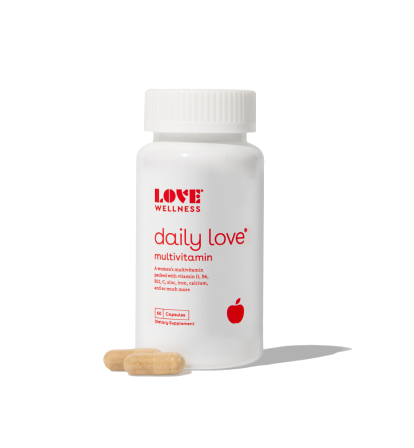Quiz time: Do you consider yourself team yoga or team Pilates? Okay, so you don’t really need to choose sides, but it often seems like fitness fans fall into one category or the other -- never both. Pilates enthusiasts swear by their intensely focused workout mode, whereas yogis may gush over the mind, body, and spirit trifecta experience of the practice.
The reality is that both Pilates and yoga share many benefits and qualities. In fact, many individuals tend to view these as complementary practices, and, therefore, choose to do both for optimal physical and mental fitness.
And while we love seeing people do both Pilates and yoga, it raises the questions: What is the true difference between Pilates and yoga? What are the benefits, and why choose one, or both, as part of your well-being routine?
In this article, we dive into everything you need to know about Pilates and yoga, including their difference and best benefits. Whichever one you choose, you’ll want to make sure you also take care of your health with clean, made-just-for-you supplements like the ones we carry at Love Wellness.
Now, are you ready to get your yoga (or Pilates) on? Let’s get started!
But First, Where Did Pilates and Yoga Come From?
One of the very first differences when comparing Pilates and yoga is the history behind the two practices. You see, yoga is considered an ancient practice while Pilates, on the other hand, is more of a modern invention that was developed really not that long ago.
Truth be told, no one knows exactly when yoga was created, but the practice is estimated to be over 5000 years old. Uncovered sacred texts have been behind this estimate, but some researchers have suggested that yoga might actually be more than 10,000 years old.
Though an ancient practice, it should be noted that yoga has evolved quite a bit over the years. Through research, the asanas (AKA yoga poses) that form a significant part of the practice have allowed experts to develop new ways to take full advantage of the benefits that yoga has to offer.
Pilates is a much more modern practice, created by Joseph Pilates and other pioneers to craft a system that would assist with the recovery of soldiers who were injured during the war. Pilates first came to the U.S. in 1923, when Joseph Pilates opened a studio in New York.
Let’s dig deeper into the differences.
Yoga
Yoga was designed for both men and women with the purpose of connecting human consciousness with the universal consciousness through physical activity. Yoga literally means “union.”
There are actually eight branches of yoga. The physical movements that we know of as yoga is actually just one of these eight. Yoga was created to improve emotional health, physical health, as well as spiritual health.
Through repetitive movement and attention to breath, yoga focuses on flexibility and broad muscle groups while proving to be extremely therapeutic. Many types of yoga involve deep breathing and meditation -- which aids in relaxation. The mediative portion of yoga tends to attract those who are seeking to take it easy and unwind.
Some of the best benefits of yoga include:
- Improved flexibility: Through deep stretching, yoga can help to increase your flexibility.
- Better shut-eye: Yogis report that time on their yoga mats leads to a better snooze. In fact, according to a recent study, over 55% of yoga fans reported better sleep, and more than 85% said they weren't as stressed.
- Mental health: Yoga’s focus on breathwork and mindfulness can help yoga students improve their emotional and mental health.
- Disease prevention: Yogis’ physical health can also improve. Researchers have found that regular practice can reduce asthma symptoms and decrease the risk for common heart issues later in life. Just don’t forget to pair your health and wellness routine with a top-notch multivitamin like Daily Love from Love Wellness!

Or 4 interest-free payments with Klarna.
Available for orders above $35. Learn more
Did you know that there are many different types of yoga that range from physically stimulating to relaxing?
Here are some of them:
- Hatha Yoga: This type of yoga is all about the basics in these slower-paced classes that require you to hold each pose for a few breaths. Hatha classes are considered to be one of the most gentle forms of yoga due to its slower pace, so it is ideal for beginners.
- Vinyasa Yoga: Vinyasa is a type of yoga that links dance-like movements with breathing techniques -- you won’t really linger long in each pose, so this is a great way to boost your heart rate and work up a sweat. Prepare for a fast-paced environment and lots of fun music.
- Ashtanga Yoga: Ideal for perfectionists seeking an orderly approach, this type of yoga consists of a six series of specific yoga poses -- you will flow and you will breathe through each pose to build internal heat. The result? Improved circulation, a calm mind, and a light -- yet strong -- body.
- Iyengar Yoga: All about precision and proper body alignment, this type of yoga is good for those with injuries. Each posture is held for a short period of time, and the use of straps, blocks, and ropes are common.
- Bikram Yoga: Bikram is practiced in a warm room heated to over 100 degrees and 40 percent humidity. All studios that practice this style of yoga follow the same 90-minute sequence, so you will know exactly what to do once you unroll your yoga mat. Be sure to stay hydrated, as the intense exercise combined with the hot room can feel pretty strenuous.
- Hot Yoga: Similar to Bikram in that it takes place in a heated room, but with different movements, this style of yoga has become increasingly popular over the years. The heat will warm your muscles to make you feel like you can take the yoga poses to the next level -- so be sure to take it easy, stay hydrated, and don’t push beyond your skill level.
- Restorative Yoga: If you’re looking for a hardcore workout, this isn’t the yoga class for you. Meant to be slow-moving, this mellow practice allows for deeper relaxation. You will use a variety of props, including bolsters, blocks, and blankets, to support your body in each pose.
Pilates
Today, there are two main forms of Pilates: mat and reformer. Both are low-impact and focus on building the core while strengthening the entire body. A reformer class uses a machine with spring resistance, while most mat classes -- as the name suggests -- only require a mat to incorporate body-weight resistance.
The most common Pilates exercise makes appearances in both kinds of classes and works the abdominal muscles. These popular abs-centric moves are often used at the start of the class so that students remember to engage their core throughout the session, even when the exercises focus on other body parts.
The benefits of Pilates are pretty endless -- but here are a few that stand out:
- Core control: Pilates can help practitioners develop strong ab muscles and build awareness of their critical core muscles outside of class, too.
- Improved posture: Awareness and engagement of core muscles also benefit posture. Pilates students often find that they can sit and walk straighter after regular practice.
- Safe mobility: Pilates includes a lot of passive and active stretching, which leads to better flexibility and joint mobility. Plus, its low-impact strengthening exercises help to keep those joints safe, too.
- Rehabilitation: Given its hospital roots, it’s really no surprise that Pilates is great for rehabbing injuries. Classes are typically slow-paced, so students can pay careful attention to what they are doing, and exercises are easily modified to meet practitioners where they are.
Bottom Line
Although Pilates and yoga share many benefits, the practices do differ. Pilates strengthens the body, with the main focus being the core. Yoga, however, doesn’t center the entire practice around any one area of the body -- its consistent focus is the breath.
Sure, Pilates also incorporates breathing, but in a different way. You see, the breathwork in yoga is used for relaxation and “union”, while the breathwork in Pilates is used to energize the muscles.
As you can see, both Pilates and yoga are great forms of fitness for the body and mind -- one isn’t better than the other, but one might be better for you personally, depending on your personal goals and fitness disposition.
We recommended trying both practices to see which one you like best. Both yoga and Pilates will do wonders for your mind, body, and spirit, and with the right vitamins and minerals, your overall health and wellness can benefit in no time.
We love our supplements because they take a sensible approach to self-care that is body-positive, based on science, and made with what you want in mind.
For all of your health and wellness needs, Love Wellness has your back to support you with whichever practice you choose, Pilates or yoga -- or even both!










